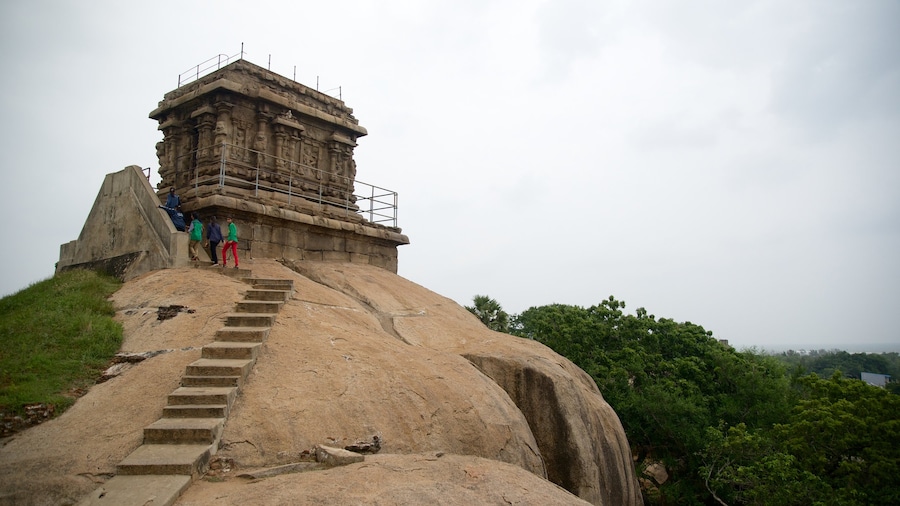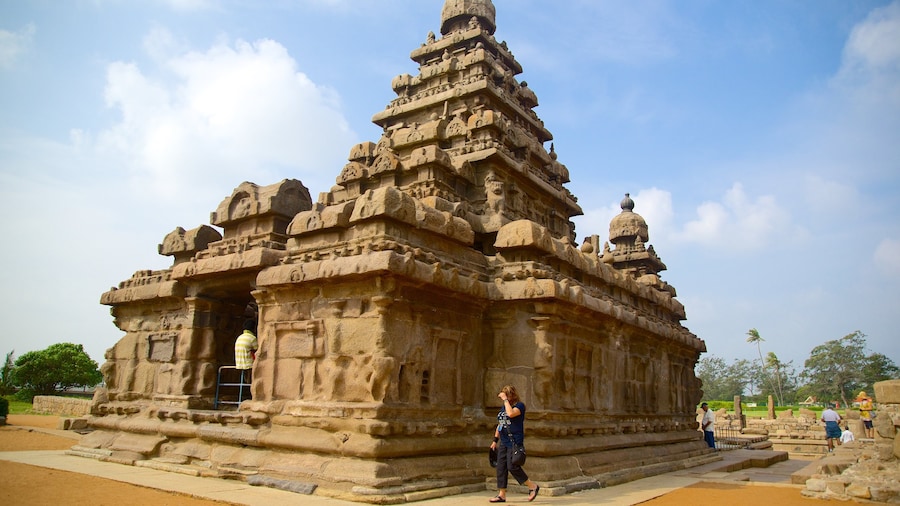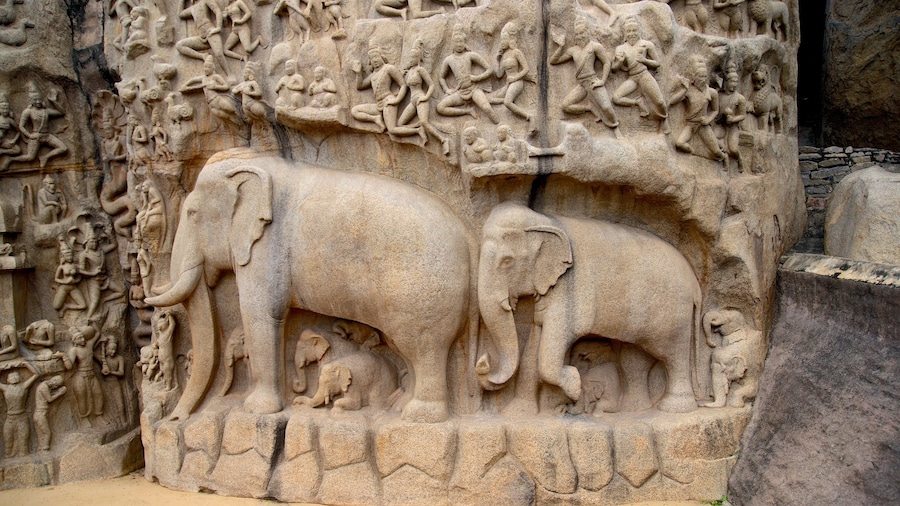See some of the legacy of the Pallavan dynasty at this stone-cut temple complex, which features caves, ancient inscriptions and ferocious tiger sculptures.
The Tiger Cave is a rock-cut Hindu temple cave from East India’s Pallavan Empire. Tour this ancient religious site and study carvings of mythical creatures.
The Tiger Cave complex was built sometime in the 7th or 8th century under the commission of King Narasimhavarman I. Historians believe the king gave speeches from the cave’s “mantapa," or platform.
The site was also a shrine dedicated to the goddess Durga, who is usually depicted seated on a tiger. As you approach the temple, observe the depictions of the Yali, a tiger-like creature of Hindu mythology. These depictions are set around the mouth of the building, while on another side there is a single sculpture of the creature. It is these carvings that give the cave its name.
Continue through the grounds to the Athiranachanda Cave. This striking looking structure has wall inscriptions in ancient Pallava-Grantha and a Shiva Linga statue, a phallic tribute to Lord Shiva. In addition to the two cave temples, find relief sculptures depicting everyday life in the 7th century.
The Tiger Cave is located in a lush parkland maintained by the Archeological Survey of India and is a popular picnic spot. Enjoy a moment's peace on the green lawns under the shade of lanky palms and twisting casuarina trees. Let the kids run and play among the rock-covered landscape.
There is more history to be uncovered within a short walking distance of the caves. A few metres away is the excavation site of an ancient brick temple that is estimated to be over two millennia old. If researchers are correct about its age, this would be one of the oldest temples in the state of Tamil Nadu.
The Tiger Cave is located 3 miles (5 kilometres) north of Mahabalipuram. Get there by taxi or drive and use the parking lot. Although there is no entrance fee, there is a small charge for parking.


















